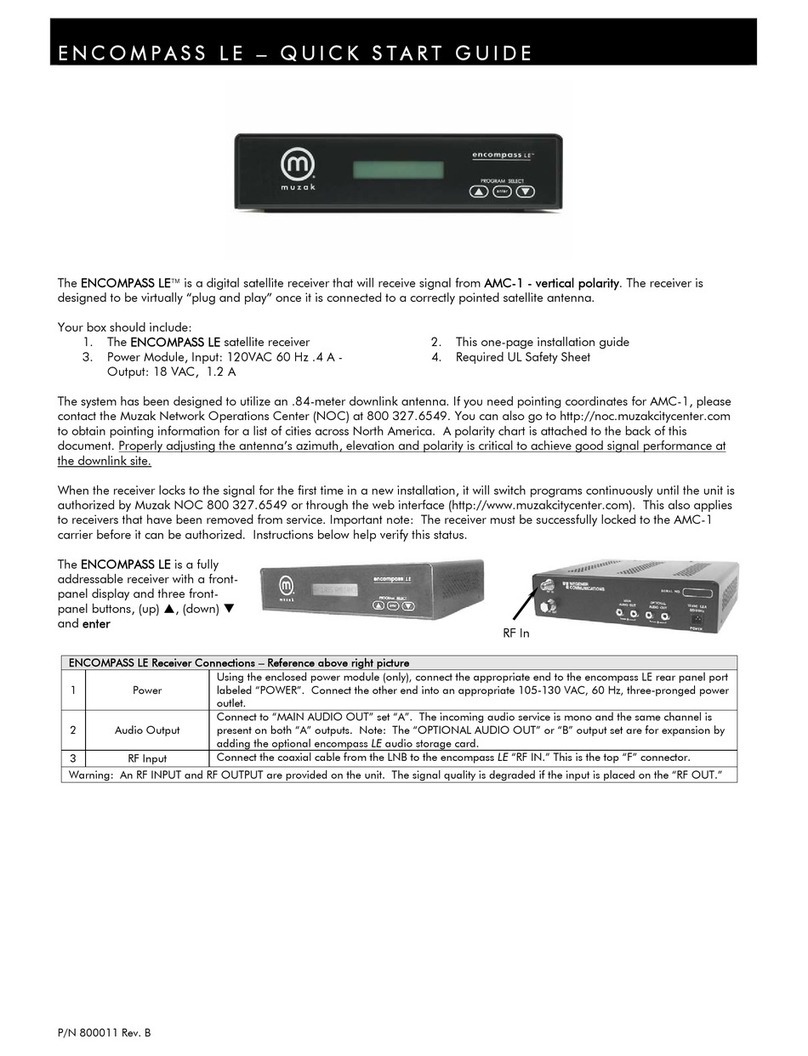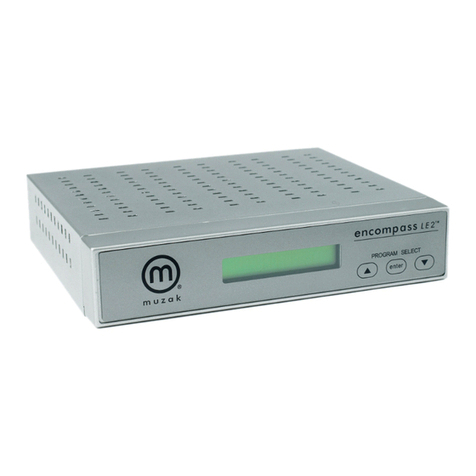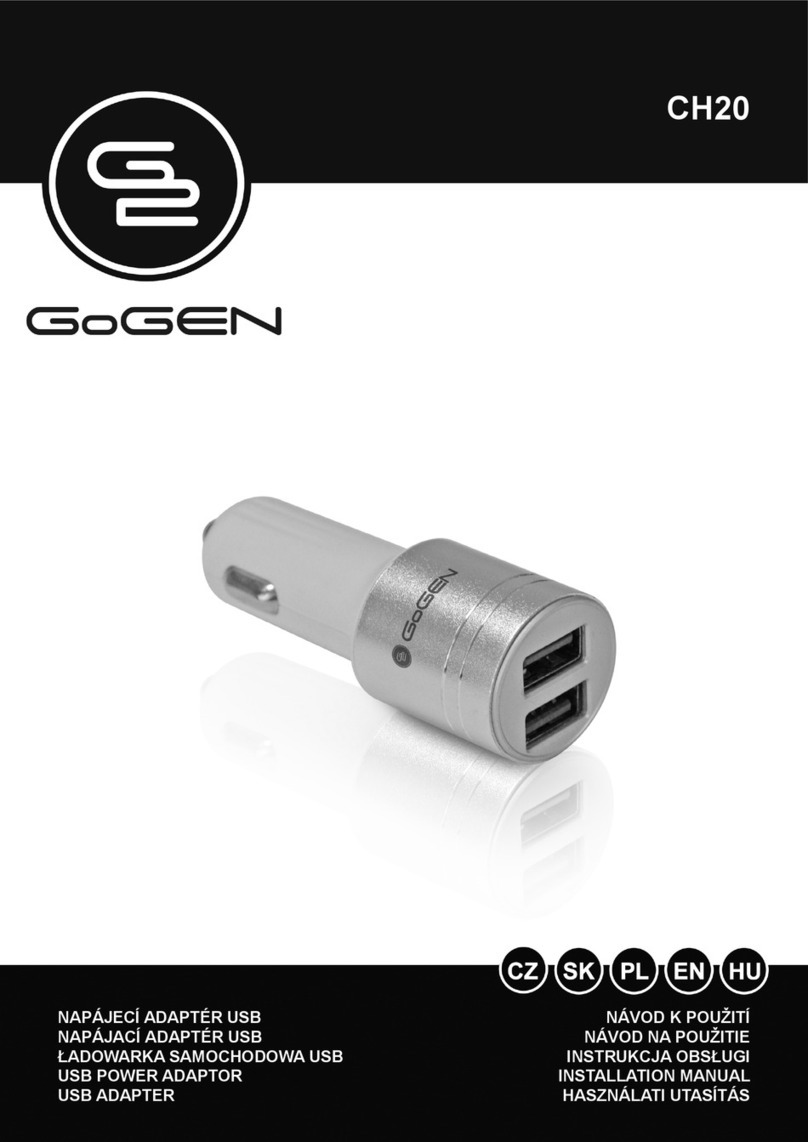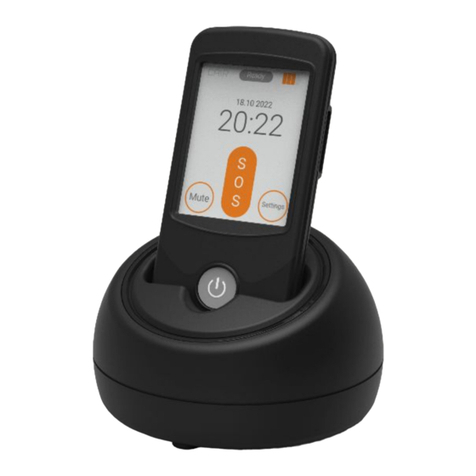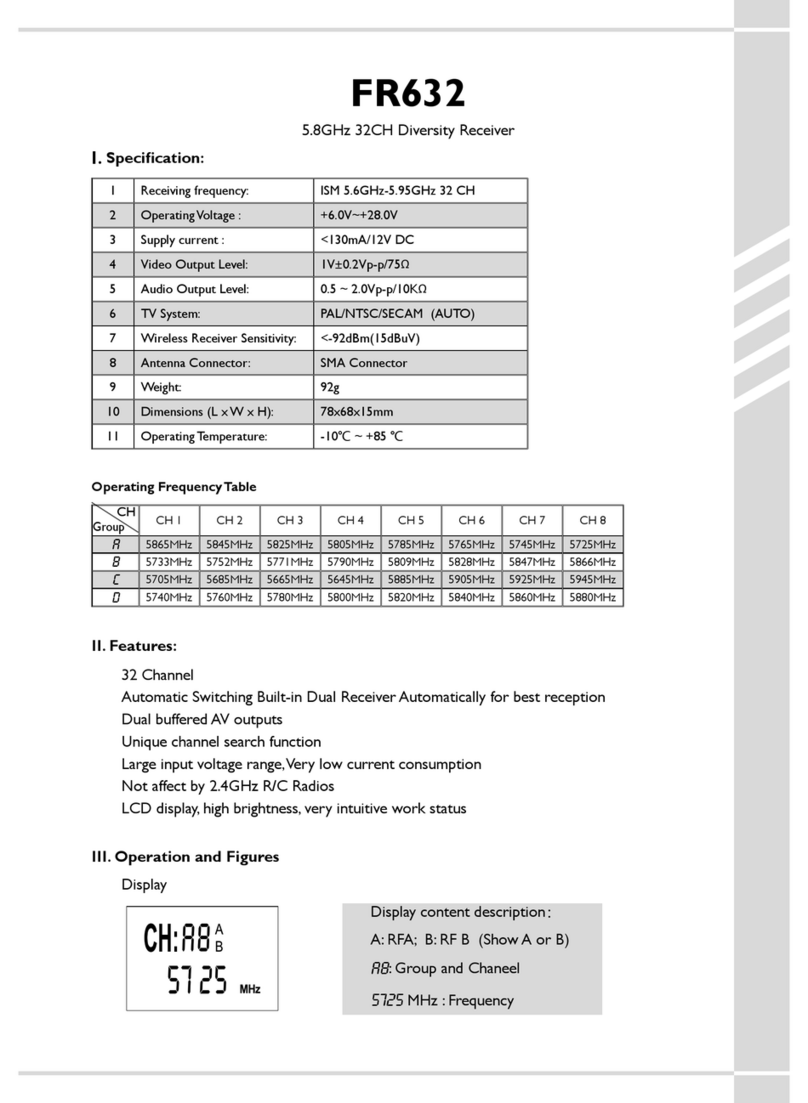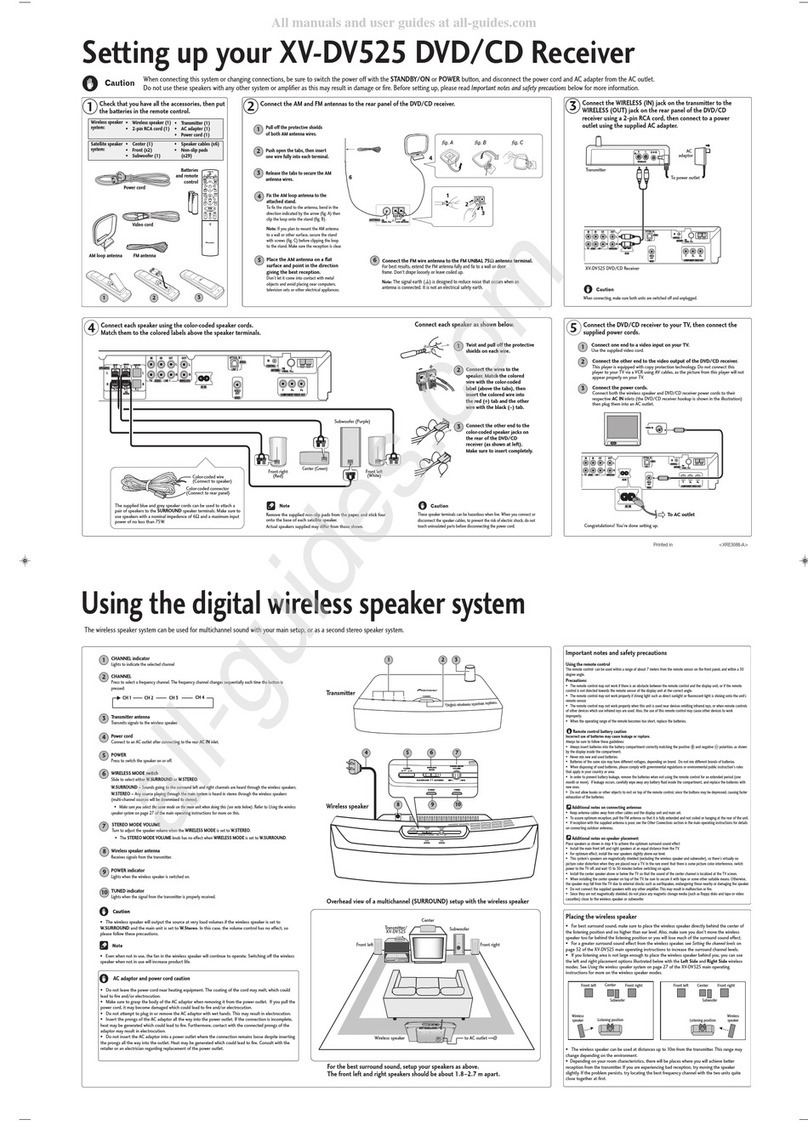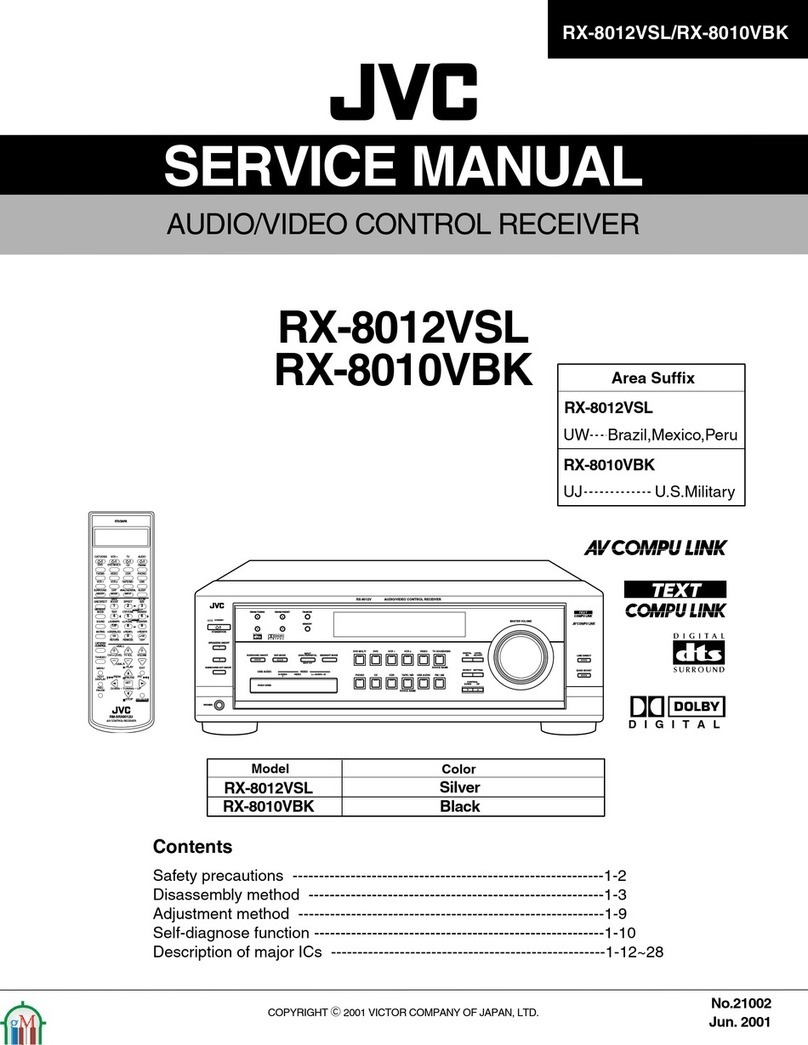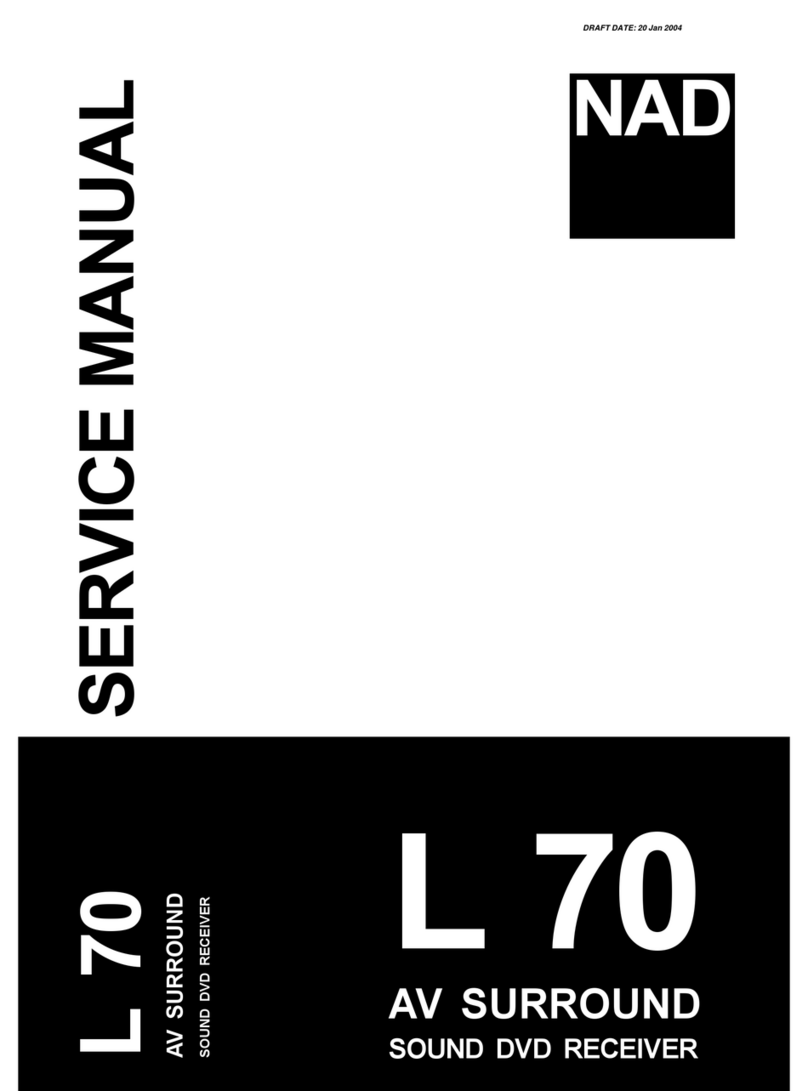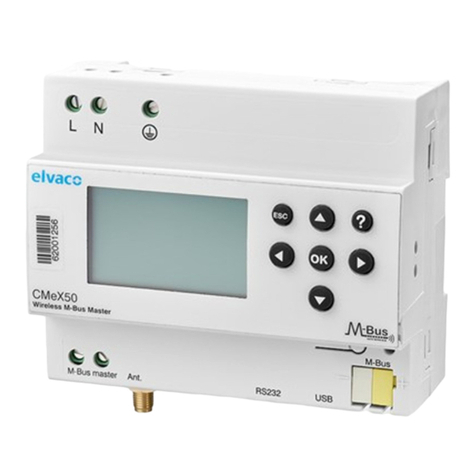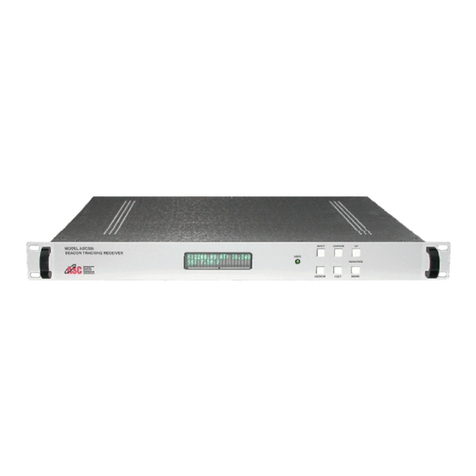Muzak DBS PRISM Series User manual

MUZAK ADDRESSABLE SATELLITE RECIEVER – PRISM SERIES
MU1797 – MULTICHANNEL
MU1597 – SINGLE CHANNEL
INSTALLATION GUIDE

Important Read all Instructions Carefully Before Installing and
Operating Receiver … Follow Instructions Closely …
Heed All Warnings!
Make certain the receiver is kept from excessive heat; including radiators, heat
registers, stoves, amplifiers and other appliances.
The receiver should be positioned so that its position does not interfere with its
proper ventilation. Care should be taken so that objects or liquids do not fall
into openings of the enclosure.
Use only the type of power source described in the instructions and as marked
on the receiver.
Warning! To avoid shock or fire do not plug in or handle near water. Do not
open unit. If repairs are needed, send unopened unit to the authorized MUZAK
service center.
Safety Suggestions – Grounding
In the event on an electrical storm; grounding clamps should be secured to the
feed support to help prevent damage to the LNB, cable and receiver. The
mounting system should be secured to a hood earth ground. An antenna system
This symbol indicates that dangerous voltage
constituting a risk of electric shock is present
within this unit.
This symbol indicates that there are impor-
tant operating and maintenance instructions
in the literature accompanying this unit.

not attached to a building should be tethered with a guide wire or similar
material.
Table of contents
Features……………………………………………..……………………….. 2
Receiver Setup ……………………………………………………………… 3
Troubleshooting ……………………………………………………………. 4
Technical Specifications …………………………………………………… 5
Warranty……………………………………………………………………. 7

1
FEATURES
1 2 3 4
11 12 13 14 15 16
1. Channel Indicator 9. Aux. output terminal strip
2. Channel Select Touch Switch 10. Serial Data Output
3. Data Squelch Indicator 11. Fuse MDL 3/8A 250V
4. Data Active Indicator 12. Audio Level Adjust
5. Audio Squelch Indicator 13. RF Signal Level Output
6. Power Indicator 14. Squelch Defeat
7. Line Cord 15. Balanced Audio Output
8. R.F. Input 16. Audio Monitor
5
6
7 8 910

2RECEIVER SETUP
1. Plug the power cord into a 110 vac wall outlet.
2. Conditions after the receiver has AC applied to it.
A. POWER light will be green.
B. AUDIO SQUELCH light will be red.
C. DATA SQUELCH light will be red.
D. DATA light will be off.
E. SIGNAL LEVEL output on the rear terminal strip will be slightly above 0 Vdc.
3. Connections to an audio amplifier is accomplished through an RCA jack labeled
MONITOR or with BALANCED OUT on the rear terminal strip. If the RCA jack
does not provide enough level, connect to BALANCED OUT and GROUND. The
audio level may be adjusted using the audio level control located next to the rear
terminal strip.
4. Connect a jumper between the SQUELCH DEFEAT and GROUND terminals,
located on the rear terminal strip. When the jumper is connected, a noise signal
sound should be heard through the audio system.

3
TROUBLESHOOTING
PROBLEM: Receiver does not operate. Power indicator does not light.
CHECK:
1. That the a.c. power cord is plugged in.
2. That power is present at the a.c. outlet.
3. That the power fuse is not blown.
PROBLEM: Output not present, but the POWER L.E.D. is lit. The SQUELCH L.E.D’s are on.
The SIGNAL LEVEL output is low.
CHECK:
1. All connections.
2. Antenna alignment as you monitor the SIGNAL LEVEL reading on your voltmeter. Adjust the
antenna for peak voltage.
3. Connect a short piece of coax to the RF INPUT connector. Check the end of the coax for +20
Vdc. If present, reconnect the main coax cable and check the voltage at the LNB side of the
cable. for +20Vdc.
4. Check the LNB.
5. Check in-line amps (if any).
PROBLEM: +20 Vdc power for the LNB is absent, but POWER LED in lit.
CHECK:
Look for a problem with the antenna cable or the in-line amplifier, LNB, ect..
PROBLEM: Noise on the audio, or absence of audio.
CHECK:
1. Antenna
2. Cables
3. LNB
4. In-line amplifiers

4TECHNICAL SPECIFICATIONS
R.F. INPUT
Frequency Range 950 to 1450 MHz
Frequency Selection 500 kHz Steps, Synthesized
Input Level -20 to –65 dBm
Noise Figure 18 dB Maximum
I.F. SECTION
Frequency 70 MHz
Bandwidth 16 MHz @ 1dB
Demodulator Threshold 7 dB typical
RF CHANNEL CHARACTERISTICS
Subcarrier Frequency Range .1 to 5.5 MHz
Frequency Selection Synthesized remotely/on site selectable
Output Impedance 600 ohm balanced. 1K ohm unbalanced
Output Level Adjustable up to +10 dBm
AUDIO CHANNEL CHARACTERISTICS NARROW WIDE
Audio Bandwidth 7.5 kHz 15 kHz
Channel Spacing 90 kHz 120 kHz
Occupied Bandwidth 65 kHz 90 kHz
Noise Bandwidth 75 kHz 100 kHz
Frequency Response 50 Hz – 7.5 kHz 50 Hz - 15 kHz
±dB typical ± dB typical
THD
Minimum Recommended <1% <1%
Operating C/No
CONTROLS
Audio Output level
Squelch
Channel Select
INDICATORS
Channel Display 7 segment L.E.D. Indicator

Power Green L.E.D. = Power On
Data Red L.E.D. = Receiving Data
No L.E.D. = Data Inactive
Audio Squelch No L.E.D. = Channel Active
Red L.E.D. = Channel Muted 5
TECHNICAL SPECIFICATIONS
INDICATORS
Data Squelch No. L.E.D. = Channel Active
Red L.E.D. = Channel Muted
INPUT CONNECTOR
R.F. Input F-type
AUX OUTPUT CHARACTERISTICS
+12 150 mA supply
Aux. output 150 mA source
OUTPUT SIGNAL CONNECTORS
Balanced Audio Terminal Strip
Unbalanced Audio RCA Jack
Aux. Outputs Terminal Strip
Serial Output DB9 Female Connector
POWER REQUIREMENTS
Voltage 105 – 130 Vac
Frequency 60 Hz
Power Consumption 30 Watts
MECHANICAL
Size 11 X 8.75 X 2.5
Weight 2.5 lbs.

6WARRANTY
This unit is warranted for a period of one year after the date of original installation to the original
purchaser against all defects not incurred by misuse or mishandling.
If questions should arise concerning this equipment, please call MUZAK at 1-800-543-6549.
This manual suits for next models
2
Table of contents
Other Muzak Receiver manuals
